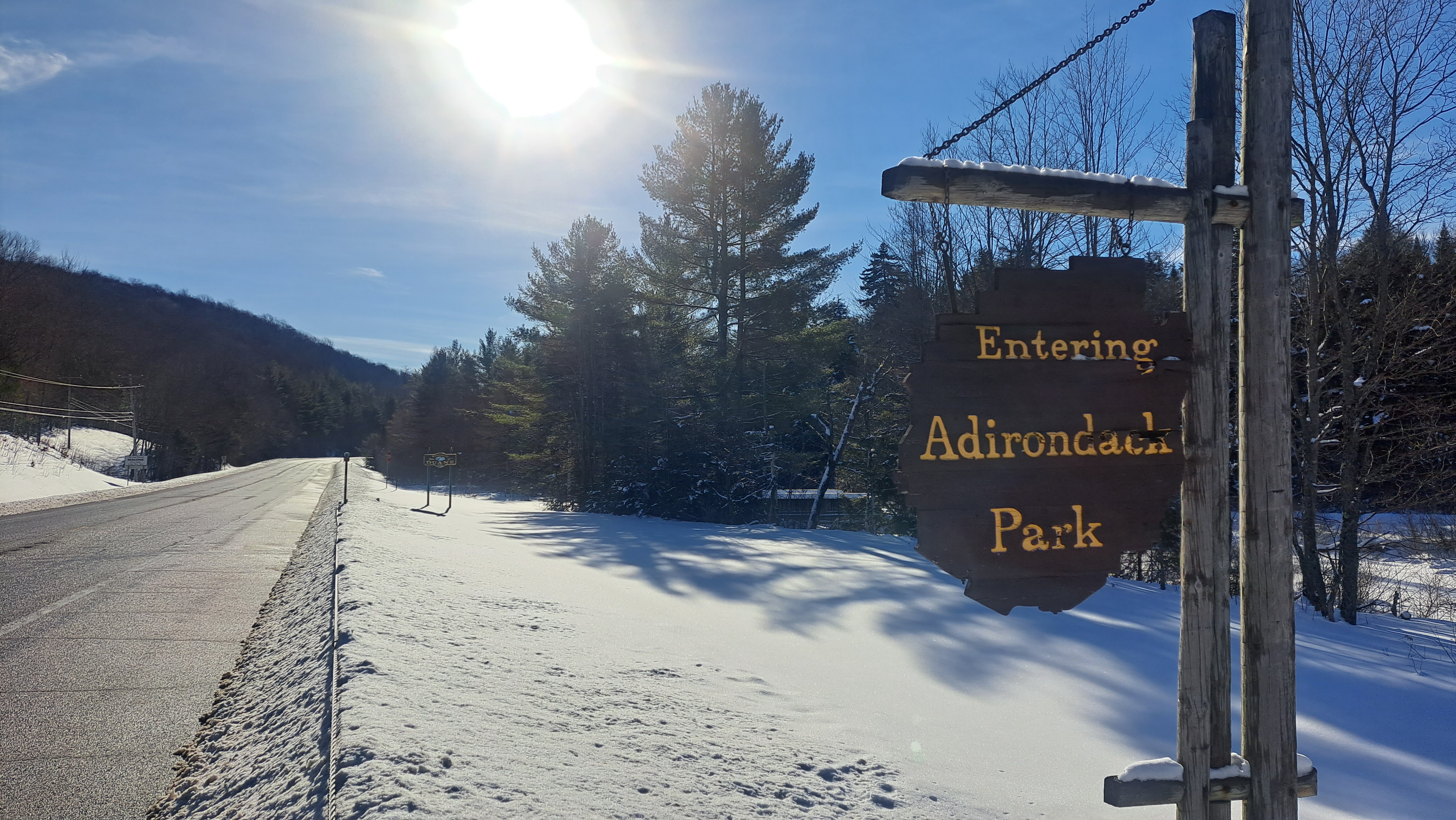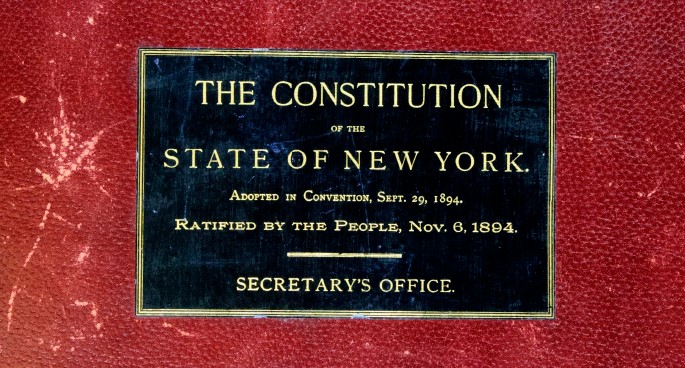
One Hundred and Thirty Years Later
By Justin A. Levine - Adirondack Council Communications Associate
Wednesday, May 15, 2024
On May 8, 1894, seventy-five delegates gathered in Albany to discuss the future of the New York State Constitution. One hundred and thirty years later, we’re still benefiting from one of those changes.
But before we reach that, we need to step back to 1892.
 The Adirondack Park
The Adirondack Park
The Adirondack region of New York had long been a source of natural resources by the mid-1880s. However, once surveys began in the area, people noticed that some of this land should be protected from logging, mainly so that the vital water resources that begin in the Adirondacks could be preserved.
This realization led the state to pass laws in the late 1880s and early 1890s that allowed the state Forest Commission to begin purchasing land to create a forest preserve. In its annual report of 1892, the Forest Commission proposed radical legislation: an act to establish the Adirondack Park.
The proposed legislation (which begins on page 22 in the link above) lays out the area where the Adirondack Park would be, including which counties and towns, and various other legalese items. But the meat of the matter is in Section 1:
There shall be a park established in the counties of Hamilton, Herkimer, St. Lawrence, Franklin, Essex, and Warren, which shall be known as the Adirondack park, and which shall, subject to the provisions of this act, be forever reserved, maintained and cared for as ground open for the free use of all the people for their health or pleasure, and as forest lands necessary to the preservation of the headwaters of chief rivers of the state, and a future timber supply.
Just two years later, New York would adopt a new state constitution, and it contains one of the most important clauses in the history of environmental protection.
Forever Wild
On May 8, 1894, New York’s Constitutional Convention began in Albany. A little less than two years earlier, the Adirondack Park had been created. But what sets this national treasure apart from other state parks is what happened from May through September, 1894.
 By that time, the state had established a Forest Preserve in the Adirondack region, and then officially created the Adirondack Park on May 20, 1892 (the bill was signed into law by Governor Roswell Flower, namesake of Lake Flower in the village of Saranac Lake).
By that time, the state had established a Forest Preserve in the Adirondack region, and then officially created the Adirondack Park on May 20, 1892 (the bill was signed into law by Governor Roswell Flower, namesake of Lake Flower in the village of Saranac Lake).
These actions began the protection of woods and waters of the Adirondacks, but what makes the Park stand out more than a century later is the enshrinement of those protections within the state constitution. Legislation can be passed any time the legislature is in session, but it takes much more effort to change the constitution. Currently, a constitutional amendment in New York needs to be passed by the legislature and then again by the next, newly elected legislature. After that, a majority of voters in New York need to pass it during an election before the constitution can be amended - a much more difficult hurdle to overcome.
So it was a far-sighted move to include protection of the Forest Preserve in 1894. The “Forever Wild” provision was first included under Section 7, Article 7 of the constitution and then changed to the now-famous Article XIV in 1938.
The lands of the state, now owned or hereafter acquired, constituting the forest preserve as now fixed by law, shall be forever kept as wild forest lands. They shall not be leased, sold or exchanged, or be taken by any corporation, public or private, nor shall the timber thereon be sold, removed or destroyed.

Those two sentences have set the tone for generations of conservation ideals. The updated constitution that was drafted from May to September of 1894 was adopted by the 75 convention delegates on September 29, and it was ratified by a vote of the people on November 6, 1894.
This “Forever Wild” clause in the constitution, which was more stringent in its protection of the Forest Preserve than the 1892 Park law, has led to what the Adirondacks have now become: an enduring testament to the value of preserving wild lands and waters for all generations. The clause adopted in 1894 created a unique, iconic national treasure that humans and animals are still benefiting from to this day, and hopefully we will continue to protect and appreciate the Adirondack Forest Preserve well into the future.
Looking for more ways to get involved with the Council?
Take Action! Connect With Us! Support Our Work!

Justin Levine joined the Council staff in 2021 as the Communications and Outreach Assistant. He previously worked as a regional marketing manager for the Regional Office of Sustainable Tourism and was an award-winning journalist and photographer for the Adirondack Daily Enterprise and Lake Placid News. Since graduating from Paul Smith’s College in 2004, Justin has worked in the environmental field in various roles in both the Adirondacks and Florida. When not working, Justin loves spending time with his family, running, and doing all the outdoor things the Park has to offer.




